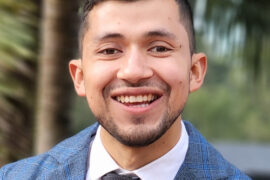
Responsable de ARAIAugmented Reality and Artificial Intelligence
Professeur
ARAI
L’équipe ARAIAugmented Reality and Artificial Intelligence (Augmented Reality & Artificial Intelligence), fondée en mai 2024, constitue une nouvelle entité de recherche dédiée à l’exploration de la frontière des technologies de la Réalité Augmentée, de la Réalité Virtuelle et de l’Intelligence Artificielle.
L’investigation de ce domaine exige une approche multidimensionnelle, englobant des aspects techniques tels que l’optimisation de la programmation GPU ou les optiques, jusqu’aux questions fondamentales liées à l’essence de l’être humain, notamment la perception et la cognition, avec de nombreuses complexités intermédiaires.
La mission de l’équipe ARAIAugmented Reality and Artificial Intelligence est d’ouvrir la voie à des transitions virtuelles pilotées par l’IA entre les différentes étapes du continuum réalité-virtuel, comme le passage de l’AR à la réalité ou de la réalité à la VRVirtual Reality. L’équipe vise à promouvoir un environnement de recherche diversifié et dynamique, où les pratiques exploratoires s’interconnectent de manière approfondie à travers des projets collaboratifs stimulants.

Responsable de ARAIAugmented Reality and Artificial Intelligence
Professeur


Interaction avec l’Humain
ARAIAugmented Reality and Artificial Intelligence
Doctorant

Interaction avec l’Humain
ARAIAugmented Reality and Artificial Intelligence
Maîtresse de Conférences

Interaction avec l’Humain
ARAIAugmented Reality and Artificial Intelligence
Doctorant

Interaction avec l’Humain
ARAIAugmented Reality and Artificial Intelligence
Responsable de ARAIAugmented Reality and Artificial Intelligence
Professeur
Communication dans un congrès
ARAIAugmented Reality and Artificial Intelligence, VENISE
Année de publication
Disponible en libre accès
Communication dans un congrès
ARAIAugmented Reality and Artificial Intelligence, VENISE
Année de publication
Disponible en libre accès
Communication dans un congrès
Article dans une revue
ARAIAugmented Reality and Artificial Intelligence, VENISE
Année de publication
Disponible en libre accès
Communication dans un congrès
ARAIAugmented Reality and Artificial Intelligence, VENISE
Année de publication
Disponible en libre accès
Article dans une revue
ARAIAugmented Reality and Artificial Intelligence, VENISE
Année de publication
Disponible en libre accès
Communication dans un congrès
ARAIAugmented Reality and Artificial Intelligence, VENISE
Année de publication
Disponible en libre accès
Communication dans un congrès
ARAIAugmented Reality and Artificial Intelligence, VENISE
Année de publication
Disponible en libre accès
Article dans une revue
ARAIAugmented Reality and Artificial Intelligence, VENISE
Année de publication
Disponible en libre accès
Article dans une revue
ARAIAugmented Reality and Artificial Intelligence, VENISE
Année de publication
Disponible en libre accès
Article dans une revue
ARAIAugmented Reality and Artificial Intelligence, VENISE
Année de publication
Disponible en libre accès
Article dans une revue
Communication dans un congrès
ARAIAugmented Reality and Artificial Intelligence, VENISE
Année de publication
Disponible en libre accès
Communication dans un congrès
ARAIAugmented Reality and Artificial Intelligence, VENISE
Année de publication
Disponible en libre accès
Communication dans un congrès
ARAIAugmented Reality and Artificial Intelligence, VENISE
Année de publication
Disponible en libre accès
Communication dans un congrès
ARAIAugmented Reality and Artificial Intelligence, VENISE
Année de publication
Disponible en libre accès
Proceedings/Recueil des communications
Proceedings/Recueil des communications
Communication dans un congrès
ARAIAugmented Reality and Artificial Intelligence, VENISE
Année de publication
Disponible en libre accès
Proceedings/Recueil des communications
ARAIAugmented Reality and Artificial Intelligence, VENISE
Année de publication
Disponible en libre accès
Communication dans un congrès
ARAIAugmented Reality and Artificial Intelligence, VENISE
Année de publication
Disponible en libre accès
Communication dans un congrès
ARAIAugmented Reality and Artificial Intelligence, VENISE
Année de publication
Disponible en libre accès